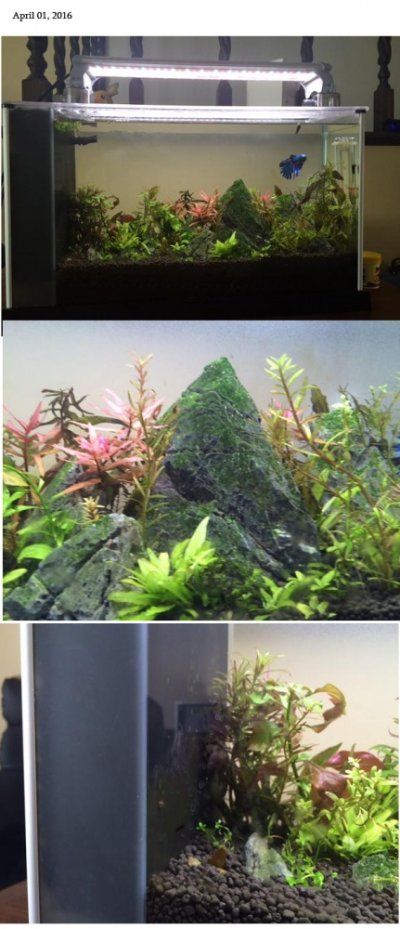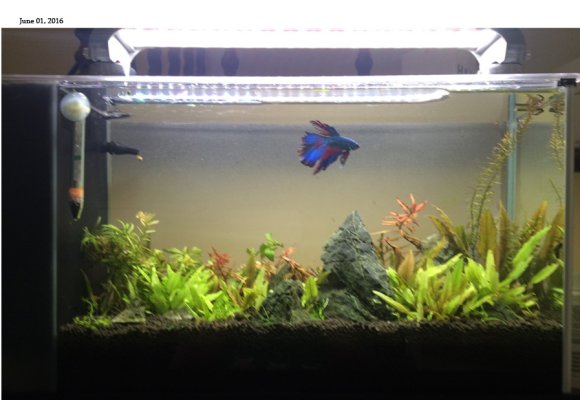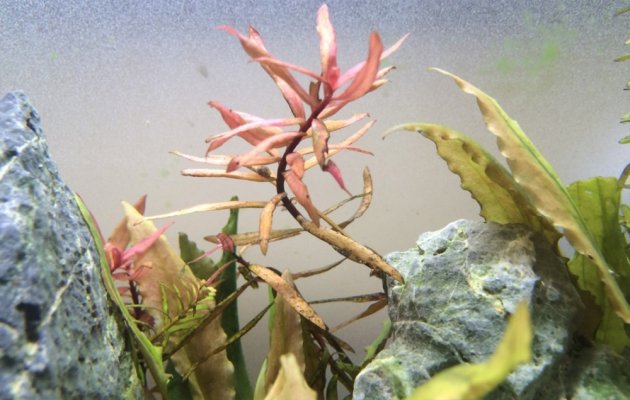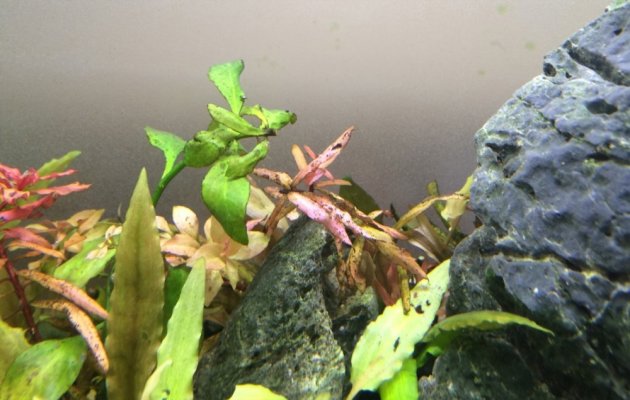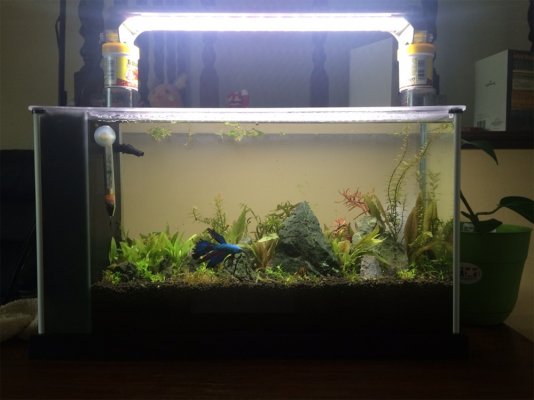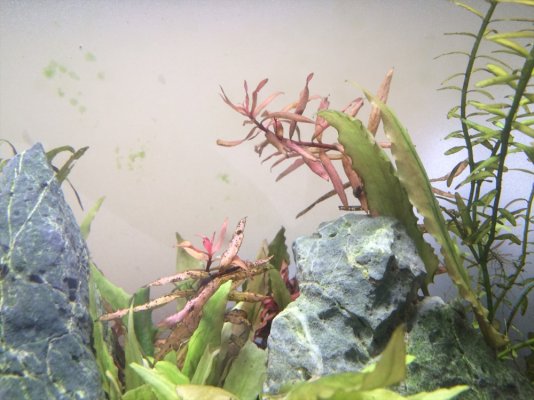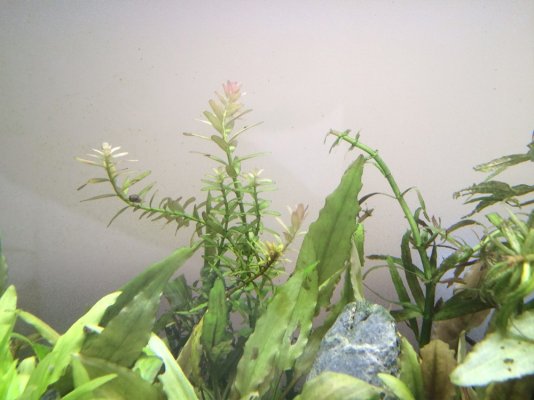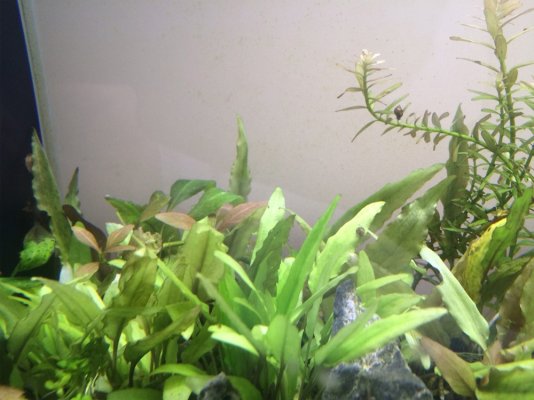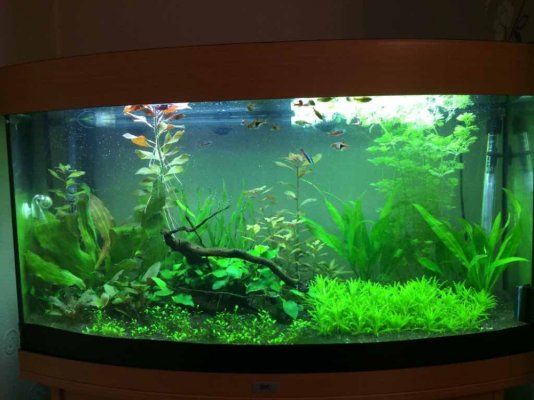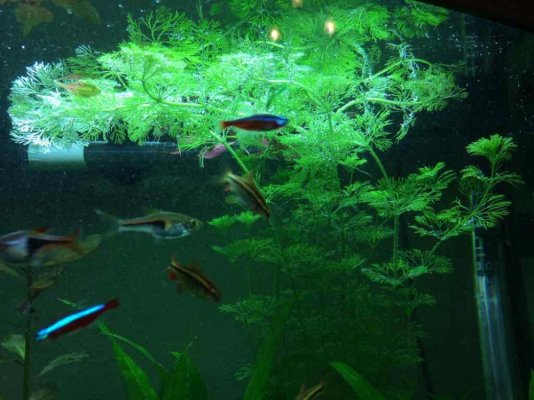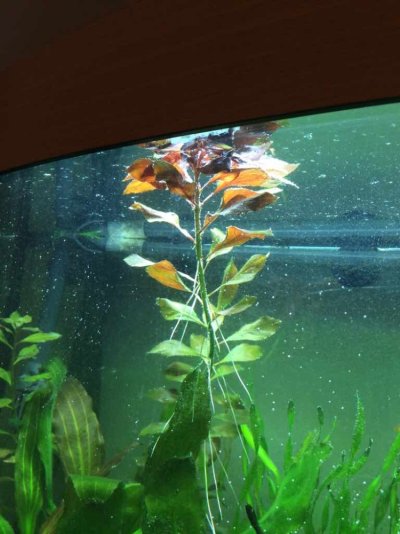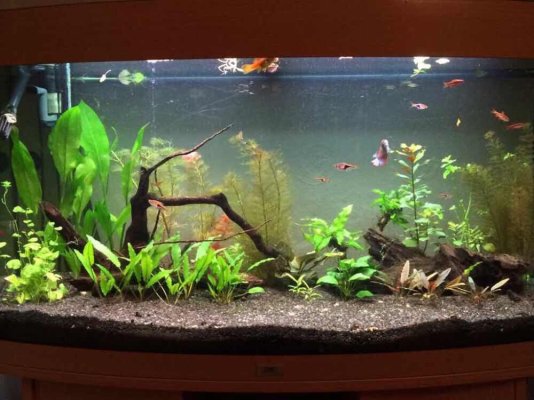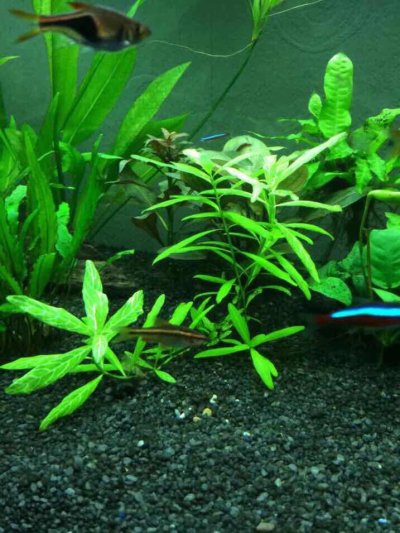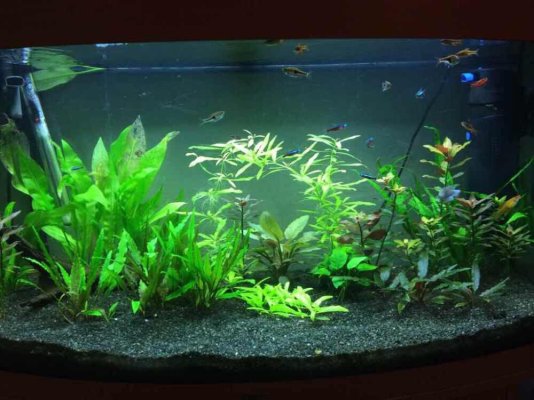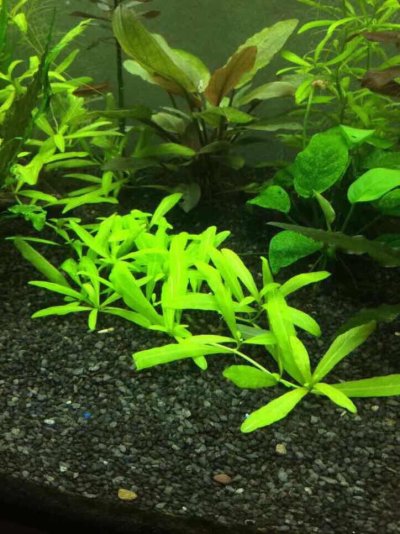Fluval Spec V 5 gallon
Light- 16" Finnex FugeRay Planted+ LED (PAR data?)
Substrate- UP AQUA Sand for Aquatic Plants
Ferts- Flourish Excel, Trace, NPK, root tabs
Stock- 1 betta, 4 amano shrimp, 2 nerites
temp: 78
flow: med setting on pump
Photo-period- 3 hrs 2x a day
Dosing: about the recommended (2x a week) for trace elements and NPK . For CO2 dosing at start of each photo period (so about half a cap, 2x a day)
water change: 70-80% 1x a week
Algae is under control. Betta fish is happy. I'm actually starting to worry that I'm overdosing with the Excel, because I hadn't realized that it could be harmful to my shrimp, but my main issue is that I can't figure out why Im getting basically getting no growth.

some plants i have/had:
-asst. crypts
-pale green "crypt parva" from petsmart that probably isnt
- Hygro sp. thai
-Ludwigia atlantis
-Limnophila aromatica
- rotala assorted (colorata, singapore, rotundifolia mix)
-Rotala enie (died)
-star repens (died)
attached are pictures from two months ago and then some from today.
About two years ago when I got the tank, I honestly had better growth / greener plants (albeit just crypts/anubias then) with just the stock light and pool filter sand, with no fertilizers at all. I understand that working at medium/high light is a different beast, but I can't seem to figure this out.
ty for replies.
Light- 16" Finnex FugeRay Planted+ LED (PAR data?)
Substrate- UP AQUA Sand for Aquatic Plants
Ferts- Flourish Excel, Trace, NPK, root tabs
Stock- 1 betta, 4 amano shrimp, 2 nerites
temp: 78
flow: med setting on pump
Photo-period- 3 hrs 2x a day
Dosing: about the recommended (2x a week) for trace elements and NPK . For CO2 dosing at start of each photo period (so about half a cap, 2x a day)
water change: 70-80% 1x a week
Algae is under control. Betta fish is happy. I'm actually starting to worry that I'm overdosing with the Excel, because I hadn't realized that it could be harmful to my shrimp, but my main issue is that I can't figure out why Im getting basically getting no growth.
some plants i have/had:
-asst. crypts
-pale green "crypt parva" from petsmart that probably isnt
- Hygro sp. thai
-Ludwigia atlantis
-Limnophila aromatica
- rotala assorted (colorata, singapore, rotundifolia mix)
-Rotala enie (died)
-star repens (died)
attached are pictures from two months ago and then some from today.
About two years ago when I got the tank, I honestly had better growth / greener plants (albeit just crypts/anubias then) with just the stock light and pool filter sand, with no fertilizers at all. I understand that working at medium/high light is a different beast, but I can't seem to figure this out.
ty for replies.


